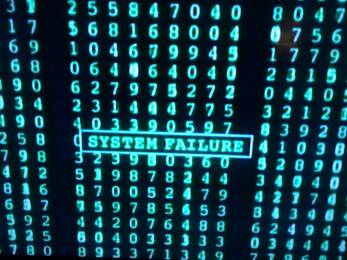
Government, energy & environment
Globalisation's missing link
There is a world price for most commodities these days but there is no such equivalent for labour. Moreover, while there is free movement for most goods and services around the world, it is extremely difficult for people, either on mass or as individuals, to move from one country to another. This is a problem (or an opportunity) because there is a looming skills crisis in most developed nations. The obvious solution is to move large numbers of people from one country to another, but this is problematic because host countries do not want to care for such newcomers when they grow old or sick. A practical alternative is to allow temporary migration. This has been tried before (in Germany and the US, for example) but the lesson learned was that there is nothing quite so permanent as temporary migrants. In short, people didn't leave. The problem is so serious that the UN recently set up a two-year Global Commission on International Migration, which recently released its recommendations. Key to these recommendations was the need to find ways to lower the level of illegal immigration and allow more temporary movement of labour. So how might such an initiative work? One way is a simple quota, possibly favouring certain countries or skills, but again this doesn't encourage people to leave. A better idea is to place a levy on firms employing foreign workers (like in Singapore) but even this has flaws. The best solution is probably the idea employed by South Korea where foreigners pay a bond, which is only returned to them once they leave the country.
Ref: The Economist (UK), 8 October 2005, 'Be my guest'. www.economist.com
Links: skills shortages, ageing population, globalisation.
Waiting for the big one
In a world dominated by short-term thinking, Japan is almost alone in producing 50- and even 100-year corporate plans. It is also, probably, the country that best understands natural disasters and in particular how to prepare for the inevitable.
For example, where else in the world is there a Disaster Preparedness Day? (August 31). It has been estimated that when (not if) the next big earthquake hits Tokyo, around 6.5 million people will be stranded in the city. So how do you get that many people safely home? The answer is they walk. The city has a plan that includes using convenience stores, cafes and restaurants as water stops, while schools and petrol (gas) stations have been signed up in advance as support centres. There was even an 18 km 'walk home' drill in the Ikebukuro district recently. In the West we are all used to drills at school or at the office but such thinking is sadly lacking in other areas such as transport or at a local community (street/suburb) level. Particularly with the much publicised threat of terrorism, someone should think about this.
Ref: Nikkei Weekly (Japan) 12 September 2005, 'Plans afoot to help people walk home after "big one"'. www.nni.nikkei.co.jp
The rise of the 'edupreneur'
In the US, the education 'market' is worth an estimated US $740 billion and approximately 10% of this is 'edupreneurial' - that is, creating profits for educational institutions. In Sweden about a third of all schools are now run by companies and the sector is growing in countries like the UK, Australia, Brazil and South Africa too. Nevertheless, there are still a significant number of people inside and outside the teaching profession that feel uneasy about 'for-profit education'. The theory (and it's not a bad one) is that education is a basic right and, like healthcare, access should be equal and open. Moreover, 'creaming off' the top students and educators creates divisions that impact on society at large in later life. In contrast, the argument in favour of partial or full privatisation is that 'the market' would encourage innovation. For example, any successful school or university would attract higher-paying customers and better-paid employees. 'Brands' with good reputations would then expand and this would enable the development of quality control and research and development thus creating a virtuous circle.
Ref: Policy (Aus), Vol 21, No 3, Spring 2005, 'Welcome the edupreneurs', R. Farrelly. www.cis.org.au
Here come the energy police
Back in WW2, air raid wardens walked the streets of Britain and made people turn off their lights - or 'blacken' their houses - as a way to prevent enemy bombers finding their targets. Now a radical plan aims to do something similar to help the British Government meet EU energy conservation targets. So-called 'energy wardens' will inspect private homes to ensure they're not wasting electricity and home owners will be made to conduct annual energy audits under a plan proposed by the Deputy Prime Minister. Such 'green police' are just one idea to be found in a new report called 'Britain's Energy Future: Securing the home front' that has been produced by the Foreign Policy Centre. The report is fairly alarmist, outlining a scenario in which the UK's energy is controlled by Islamic extremists in the Middle East.
Ref: New Builder (UK) 7 November 2005. www.newbuilder.co.uk
When museums start to dance
Museums, especially museums of contemporary art, are starting to cross over with dance and music venues in Japan according to a report in the Nikkei Weekly. A good example is the Tokyo Metropolitan Museum of Photography, which is hosting a series of events by Japanese dance companies including the Strange Kinko Dance Company. Other museums hosting dance performances and installations include the Hiroshima City Museum of Contemporary Art and the Museum of Art in Kochi. The trend has been in evidence for about a decade but until recently performances were held mainly in small local museums. Museums are often perfectly suited to such performances due to their architecture and spacious interiors.
Ref: Nikkei Weekly (Japan), 24 October 2005 'Art museums open to modern dance'. www.nni.nikkei.co.jp
Links: Night museums, museum holidays, sleepovers in museums.
